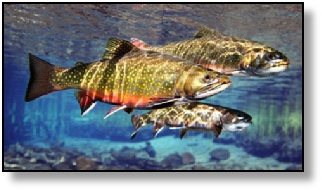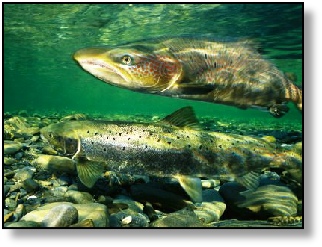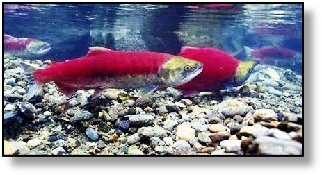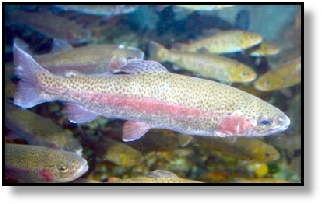EACH PAGE HERE IS AN EXTRACT FROM THE EBOOK.
To Read More
To Read More
Just $18.49
Just $18.49


Fly Fishing Encyclopedia



Fly Fishing Encyclopedia



Fly Fishing Encyclopedia



Fly Fishing Encyclopedia



Fly Fishing Encyclopedia

Rainbow are fine looking fish, having a deep red or vibrant pink bar running along the flank. With a dark green to olive back and a well spotted upper half which extends right through the tail, it is unlikely that you would mistake a rainbow trout for any other fish. Their size is very dependent upon their habitat and many fisheries now grow their stock on to enormous sizes. There seems no upper limit to which these monsters can be force fed! Some purists eschew these artificially reared fish but - as always - it's a matter of paying your money and taking your choice. I'm sure these big fish would not be offered if there was not a willing market for them.
A trout is a trout is a trout. Well - not quite. There are many fish going under the name of trout and some are not even in the same group (genus) as what we would call a trout. When we normally use the word trout we are probably referring to the rainbow trout or brown trout - and even these two come from different groups. The Latin name for the rainbow trout is Oncorhynchus mykiss (pronounced onk-or-ink-us my-kiss). Note that the genus deserves a capital letter but not the species type. To make matters even more complicated, the difference between trout and salmon can initially be somewhat confusing. There are about 24 species in the salmon and trout family, some of which migrate while others remain close to their place of birth for their whole lives.
Chinook have a normal life cycle of four years but have never been as prolific as some of the other species. As with all salmon, they do not feed once they have entered the river system to start their spawning run. Yet they will still take a fly and this is normally ascribed to their naturally predatory nature. Sometimes confused with the coho, they can be identified by the all black mouth and tongue, as well as spots which cover both upper and lower lobes of its tail. There are now fresh water variants of the chinook living in the Great Lakes of North America. The average chinook will run to 12 lb but they are known to grow to over 120 lb.
THE SALMONID FAMILY



